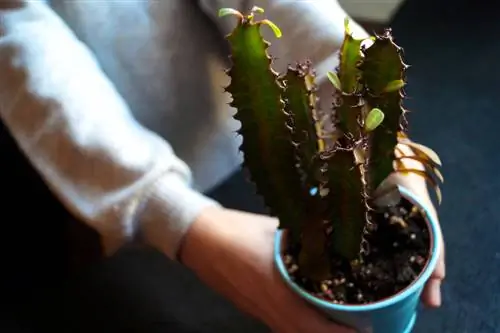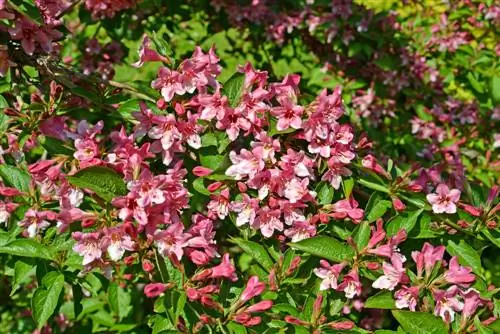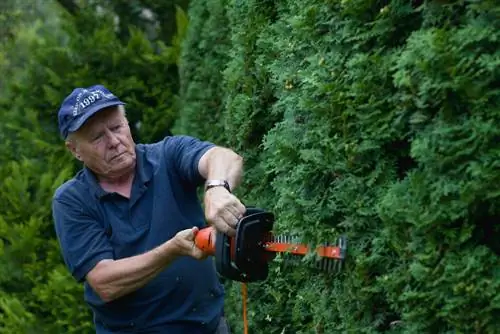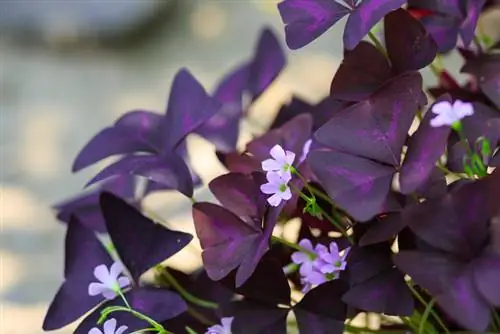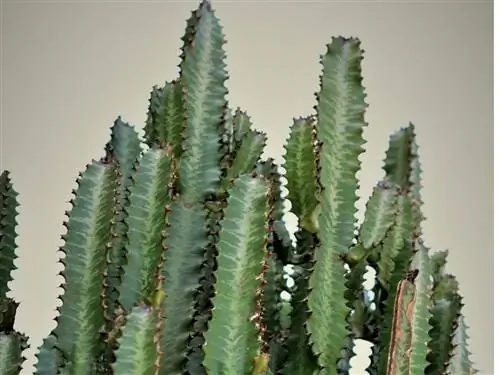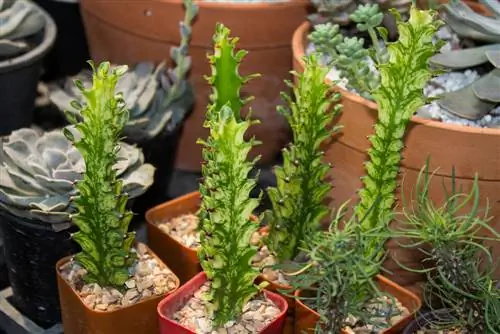- Author admin [email protected].
- Public 2023-12-16 16:46.
- Last modified 2025-01-23 11:21.
The triangular spurge (Euphorbia trigona) is often referred to as the “Western cactus” due to its exotic appearance (botanically incorrect), although the care needs of this subspecies of the spurge family, which is common as a succulent houseplant, are certainly reminiscent of those of cacti. If a triangular spurge is to be cut, protective measures must always be taken against the poisonous, milky plant sap.
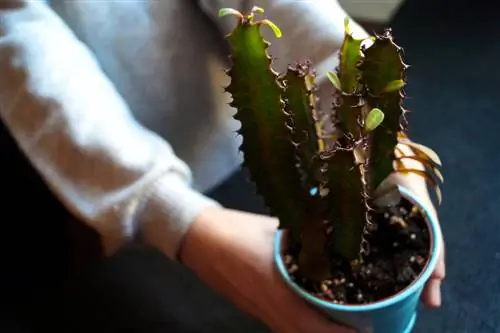
How to cut triangular spurge?
When cutting the triangular spurge (Euphorbia trigona), protective measures should be taken against the poisonous milky sap. Pruning limits height growth and promotes branching. Cuttings at the top interface allow the plant to propagate.
Reasons for pruning
Actually, the Euphorbia trigona is a very grateful houseplant, not least because it doesn't have particularly high demands and can cope very well with very dry indoor air and a sparse supply of nutrients. In many cases, even a relatively small plant pot cannot stop the triangular spurge from reaching heights of over two meters over time. Since these dimensions can be impractical indoors, timely pruning can effectively limit height growth. In addition, the cut sometimes promotes the branching of the individual shoots, which otherwise often shoot up into the sky like straight pillars. From an optical point of view, all cutting measures must be placed very carefully, as the scars on the plant skin caused by the cut remain visible for a long time and can therefore significantly affect the aesthetic effect of a Euphorbia trigona. After all, the plant parts removed during pruning can easily be used for propagation from cuttings.
Cut cuttings correctly for propagation purposes
Sometimes it can happen that particularly tall specimens of Euphorbia trigona are severely shortened when pruned. In this case, only use the top section with a length of around 15 to 30 cm for propagation. “Middle pieces” made from the cut material are not only more vulnerable due to the double wound surface, but are also visually unsightly. After cutting, the cuttings should be allowed to dry for a few days before they are finally placed in suitable succulent soil (€12.00 on Amazon).
Don't panic: proceed consciously and minimize risks
The dangers of contact with the poisonous milky sap of the spurge family should not be underestimated, especially for small children and pets. Nevertheless, you should not panic when faced with this genus of plants, but rather consciously take certain precautionary measures:
- Secure tall specimens from falling over (and breaking) by tying them up
- Do not leave children and pets unattended in the same room
- Always wear rubber gloves when carrying out care procedures
Tip
The coagulation of the milky sap at the interfaces of a Euphorbia trigona can be accelerated by placing a cloth moistened with (not boiling) hot water. Due to the toxic ingredients, this should then be disposed of safely.

